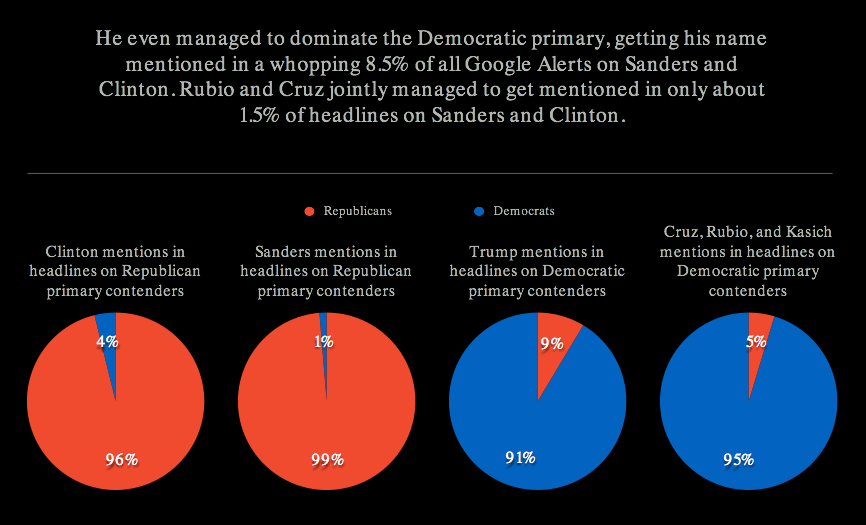In this year’s highly fractured presidential race, there is only one thing all the candidates can agree on–the media has done them wrong. From allegations of bias to ignoring candidates to covering the wrong things, the only candidate who should be happy with all the free media coverage is Donald Trump, and even he wants laws that make it easier to sue journalists.
In an effort to look more closely at what the media really does cover, we analyzed the headlines of more than 6,000 articles from 10 news outlets from August 18, 2015, until just before Super Tuesday (February 28). This was the period that helped shape public opinion before most of the voting kicked in. While headlines don’t always capture the thrust of the entire story, it’s worth noting that studies have shown only 40 percent of the public read past the headline anyway.
A word of caution. This data has been collected from daily Google Alert emails on each of the candidates. This means the data should only be used to gauge general patterns in media coverage. The New York Times, The Washington Post, Politico, CNN, and The Huffington Post are among the outlets we’ve included in our analysis.*
Note: The interactive slideshow below only works on laptop and desktop. 
Click here to access the data we used in this project.
Graphics by Christie Chisholm
*876 headlines from The New York Times, 840 from The Washington Post, 1209 from CNN and CNN International, 525 from The Huffington Post, 447 from Politico, 443 from ABC News, 373 from TIME, 414 from CBS News, 338 from The Washington Times, and 330 from USA Today were analyzed for this article, spanning from August 18, 2015, to February 28, 2016. In a very small number of headlines, the first line of the article has been used in place of the headline. This has not resulted in any major changes as a whole since the keywords we used to search through the headlines were usually reiterated in the first sentence, and vice-versa.
What else can we learn from the data? On a larger level, we can say that complaints about the media assisting Trump’s rise or ignoring serious issues miss the point. Media outlets will always produce stories that contain new information—whether it’s about Clinton’s emails, new polls or Trump’s remarks. We shouldn’t expect broad, familiar proclamations by candidates to get the same type of coverage on a daily basis unless there is something new in what they are saying.
Devansh Mehta is a student in a course on media writing and storytelling, taught by the editors of Columbia Journalism Review.
